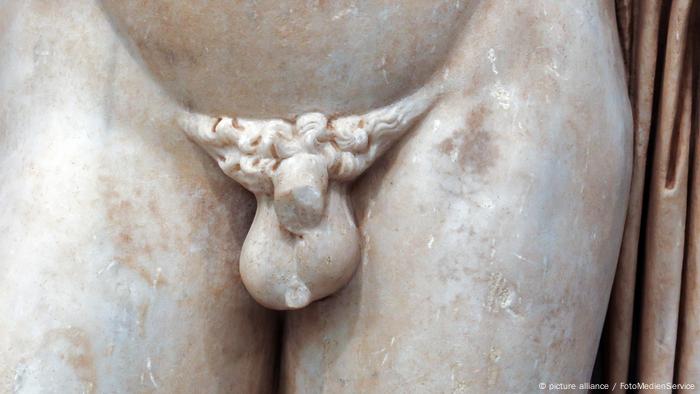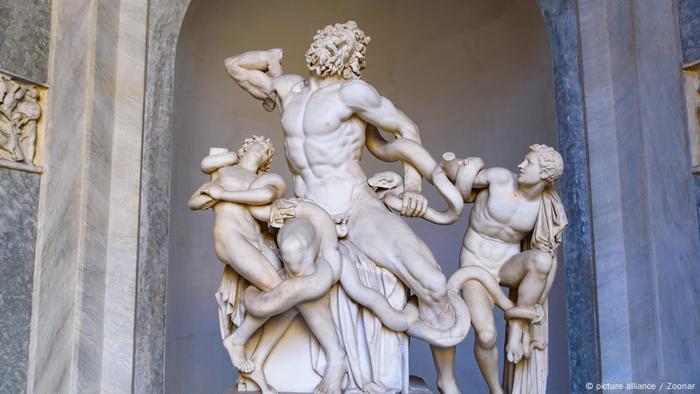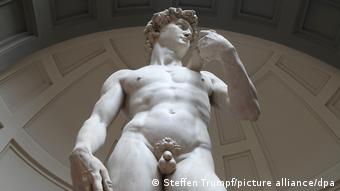It is considered a symbol of masculinity: the penis. However, many men are dissatisfied with their best piece – because it seems too short to them. Had they lived in antiquity, their judgment would have been different.

Long privates were considered in the Antiquity as ugly
In the Vatican Museums in Rome, a group of tourists is standing in front of one of the showpieces of the house: the Laocoon group. The more than two meter high sculpture is around 2000 years old and shows the Trojan priest Laocoon and his sons. He is said to have advised his compatriots against bringing the Greeks' wooden horse into the city – because he suspected a ruse by the besiegers. In fact: warriors hid themselves in the horse, who then sealed the fall of Troy. That was the plan of the gods – and because Laocoon wanted to blunder them with his warning, they had him and his children killed by snakes.
An exciting story from times long past – but one detail in particular catches the eye of the group. Laocoon's penis is extremely short – and not just that. Statues of muscular men with tiny privates are scattered throughout the museum.

The Laocoön group is an ancient masterpiece – with a short penis
Laughter and self-control
Why do you think the sculptors of antiquity equipped men so modestly? “Hmm, I was a gynecologist,” says a Dutch tourist with a smile, “I wasn't that concerned with men's lower parts.” And then he adds: “Although, statistically speaking, southern penises are supposed to be shorter than those from the north.”
That was definitely not the reason, the archaeologist and tour guide Chiara Giatti clarifies. “To the ancient Greeks and Romans, large genitals were considered ugly,” she explains. “The stonemasons only modeled small private parts because they wanted to make it clear: This man is a rationally acting intellectual and as such he has his instincts under control.”

Unbridled: Priapus, the god of fertility
The ancient man thus had a high degree of self-control and knew how to control himself – in contrast to the barbarians and some gods, including Dionysus, the god of wine, pleasure and ecstasy. In his entourage there were always the animal satyrs, intermediate beings made up of human beings and goats. They celebrated extravagant feasts and merried with the native nymphs of the forests.
“These gods and forest spirits were voluptuous, so their genitals were depicted accordingly large,” says Giatti. Dionysus' son Priapus, who fathered the goddess of love Aphrodite, clearly had the largest . She abandoned the child with the abnormally huge phallus in the mountains. Shepherds found him there, raised him and revered him because of his impressive penis as a bringer of fertility.
Michelangelo inspired by antiquity
The small penis as an ideal of beauty was initially a Greek affair. Around 2400 years ago, the comedy writer Aristophanes recorded what the ideal male body should look like: “A shiny chest, light skin, broad shoulders, a tiny tongue, strong buttocks and a small tail”.

The crowd puller in Florence: Michelangelo's David
The Romans adopted this idea. And not just them: Renaissance artists such as Michelangelo and Raffael were enthusiastic about the perfectly modeled masterpieces of antiquity and used them as a guide in their work. Michelangelo's David, for example, which was created between 1501 and 1504 and can be admired today in the Galleria dell'Accademia in Florence, is only equipped with a tiny penis.
Study: “Piselli” are getting longer  ;
Nowadays, the view of the male genitals has changed. Mini phalluses are frowned upon, large penises are considered masculine and stand for success. According to a recent study by Stanford University in California, they are even getting longer: The male genitals have grown by 24 percent in several regions of the world and in all age groups over the past 30 years, the scientific team recently reported in the “World Journal of Men's Health”.
In ancient times, these dimensions would have caused aesthetic horror. “The length doesn't matter at all, women have known that for a long time,” comments a tourist from Israel who is standing in front of the Laocoon group and photographing the antique mini-phallus. Incidentally, in Italy the penises are colloquially called “piselli” – which translates to “peas”. Nomen est omen.